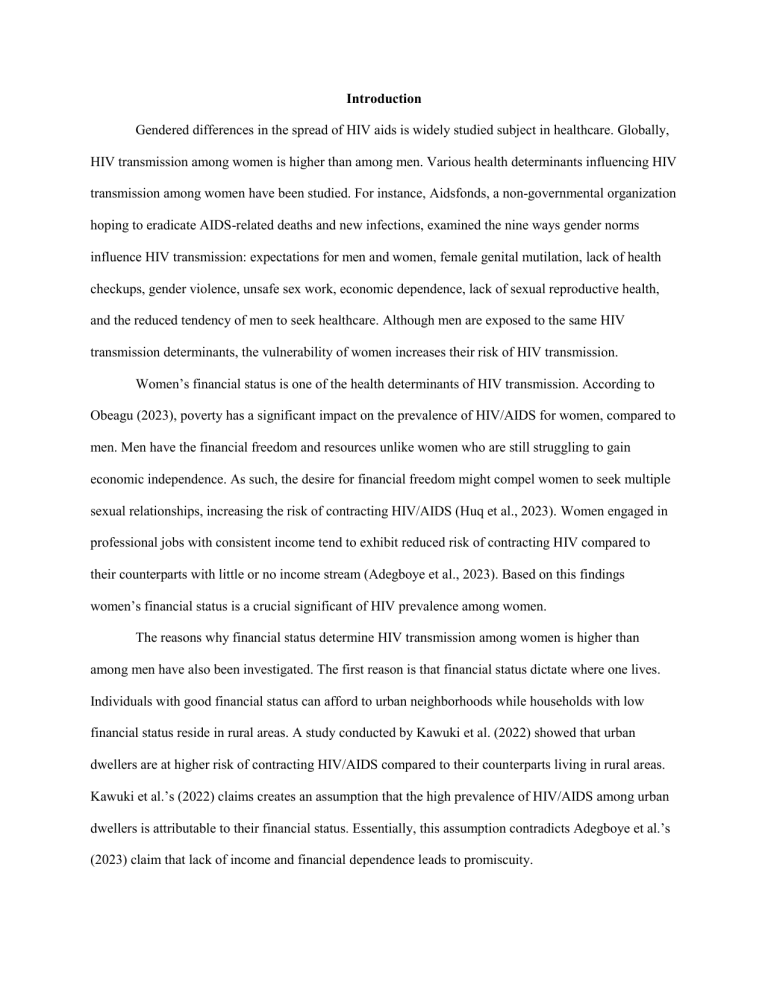
Introduction Gendered differences in the spread of HIV aids is widely studied subject in healthcare. Globally, HIV transmission among women is higher than among men. Various health determinants influencing HIV transmission among women have been studied. For instance, Aidsfonds, a non-governmental organization hoping to eradicate AIDS-related deaths and new infections, examined the nine ways gender norms influence HIV transmission: expectations for men and women, female genital mutilation, lack of health checkups, gender violence, unsafe sex work, economic dependence, lack of sexual reproductive health, and the reduced tendency of men to seek healthcare. Although men are exposed to the same HIV transmission determinants, the vulnerability of women increases their risk of HIV transmission. Women’s financial status is one of the health determinants of HIV transmission. According to Obeagu (2023), poverty has a significant impact on the prevalence of HIV/AIDS for women, compared to men. Men have the financial freedom and resources unlike women who are still struggling to gain economic independence. As such, the desire for financial freedom might compel women to seek multiple sexual relationships, increasing the risk of contracting HIV/AIDS (Huq et al., 2023). Women engaged in professional jobs with consistent income tend to exhibit reduced risk of contracting HIV compared to their counterparts with little or no income stream (Adegboye et al., 2023). Based on this findings women’s financial status is a crucial significant of HIV prevalence among women. The reasons why financial status determine HIV transmission among women is higher than among men have also been investigated. The first reason is that financial status dictate where one lives. Individuals with good financial status can afford to urban neighborhoods while households with low financial status reside in rural areas. A study conducted by Kawuki et al. (2022) showed that urban dwellers are at higher risk of contracting HIV/AIDS compared to their counterparts living in rural areas. Kawuki et al.’s (2022) claims creates an assumption that the high prevalence of HIV/AIDS among urban dwellers is attributable to their financial status. Essentially, this assumption contradicts Adegboye et al.’s (2023) claim that lack of income and financial dependence leads to promiscuity.


